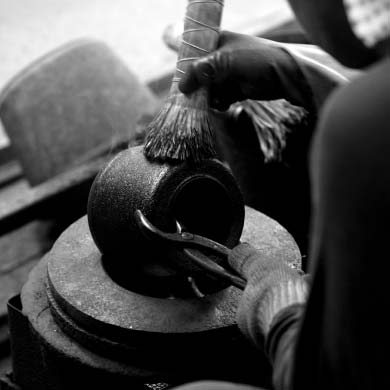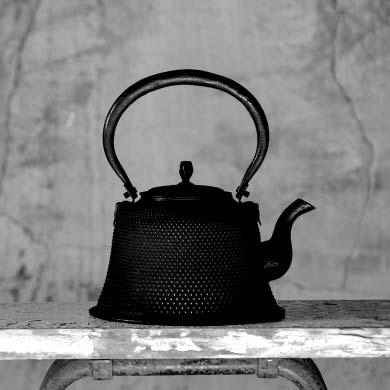Ironware
Nambu ironware refers to the cast iron craftsmanship originating from the cities of Morioka and
Oshu in Japan’s Iwate Prefecture. These ironworks, known as Nambu ironware, are crafted from
natural iron, embodying a cycle of creation and return to nature. As household items, Nambu
ironware has been preserved for over 400 years, growing richer in texture and character with use,
each piece developing a unique patina influenced by its owner.

Nambu iron kettle
Used for brewing tea. These kettles come in
various shapes, such as round, flat-bottomed ovals, and the natsume-maru, with traditional motifs
like cherry blossoms, chrysanthemums, peonies, pines, and auspicious animals such as horses and
turtles adorning their surfaces. Each kettle undergoes approximately 65 steps in its creation, most of
which are completed by hand. Becoming a craftsman takes at least 15 years, with each believing
that they must create with a user in mind, a belief passed down over 400 years.

The intricate process of making Nambu ironware begins with sketching the design, followed by
mold making, creating the clay mold, and then firing it. The molten iron is poured into the mold,
and once the basic form is achieved, the kettle is heated to 800-1000°C using charcoal to create a
protective film on its surface to prevent rusting. The entire process, with all its meticulous details,
can take nearly two months to complete a single piece.
